What is considered the backbone ingredient of the plant kingdom is also beneficial for humans in multiple ways. Yes, we are talking about chlorophyll! Are you curious to learn more about chlorophyll’s benefits?
From stimulating weight loss, reducing constipation, and treating anemia to reducing cancer and inflammation risk, chlorophyll can work wonders when included in your diet.
In this article, we explore the benefits of chlorophyll in detail, why it is important for us, the foods rich in chlorophyll, and its potential risks to be wary of. Keep reading!
In This Article
What Is Chlorophyll?
Simply put, it is chlorophyll that gives the green color to plants and few algae. It is a magnesium-rich pigment that absorbs sunlight and triggers photosynthesis.
Based on its chemical structure and occurrence, chlorophyll is classified into different classes:
- Chlorophyll a: Found in all terrestrial plants, algae, and cyanobacteria that can photosynthesize.
- Chlorophyll b: Explicitly found in green algae and higher plants having chlorophyll a.
- Chlorophyll c: Found as an accessory pigment with chlorophyll a in brown algae and diatoms.
- Chlorophyll d: Found as an accessory pigment with chlorophyll a in some red algae.
There are rarer variants of chlorophyll that are being studied to understand their occurrence and significance.
Isn’t that amazing? One little molecule can drive the entire plant kingdom! But what does it exactly do to deserve all this attention? Here is the answer.
How And Why Is Chlorophyll Important For Us?
Apart from being responsible for photosynthesis in plants, chlorophyll (and its water-soluble derivative, chlorophyllin) benefits humans in a variety of ways. Surprising, isn’t it?
That’s what researchers have figured out. Though poorly absorbed, chlorophyll or chlorophyllin binds to or interacts with cancer-causing chemicals and prevents cancers, purifies your blood, and protects your GI tract, liver, and kidneys with its antioxidant properties.
Here’s another thing that blew my mind – chlorophyll shares a similar chemical structure with hemoglobin! Hemoglobin has an iron atom in the center of the ‘heme’ ring, whereas chlorophyll has a magnesium atom. In other words, chlorophyll is like a doppelgänger and can fill in for hemoglobin in times of crisis (1).
I had goosebumps when I realized the similarity between the architecture of the plant and animal (human) kingdoms. So, I’m going to fill you in about more of such wonders of the ‘elixir of plants’ that is chlorophyll.
You don’t have a choice but to read ahead!
8 Surprising Benefits Of Chlorophyll
1. A Potent Antioxidative Agent
Chlorophyll can fight oxidative stress like other known antioxidants like vitamin E, vitamin C, polyphenols, and caffeoyl derivatives. Among them, copper-containing chlorophyllin is more potent than magnesium-carrying chlorophyll (2).
When in their active form, chlorophyll and chlorophyllin can scavenge free radicals from your bloodstream and improve longevity, reduce aging symptoms on your skin (wrinkles, fine lines, breakouts, pigmentation), protect organs from oxidative stress and damage, and also prevent certain types of cancers.
2. Stimulates Weight Loss

Shutterstock
Adding chlorophyll or chlorophyll-containing plant tissues (like thylakoids) can suppress hedonic hunger (the urge to binge on greasy, high-sugar or salty foods) by stimulating the production of appetite-suppressing molecules.
It also interferes in the absorption of glucose, lipid and fat assimilation, reduces serum triglyceride levels, and ultimately promotes weight loss in obese women.
When paired with a 30-minute exercise routine, chlorophyll also reduces the blood LDL (bad cholesterol) levels, helping you to lose those unwanted pounds healthily (3).
3. Can Aid In Reducing Symptoms Of Indigestion And Constipation
Chlorophyll can change the nature of your gut microbiota, i.e., it can promote the growth of helpful microbes in your gut. These microbes, especially those in the small intestine, act on the undigested food in the gut and help in the assimilation of those nutrients.
Such ‘prebiotic’ microbes, like Lactobacillus reuteri and Bifidobacteria, can also prevent flatulence, indigestion, and constipation. So, eating leafy vegetables or chlorophyll supplements can boost your digestion and prevent obesity (3).
4. A Natural Deodorant

Shutterstock
Bad breath, body odor, vaginal odor, and sometimes even fecal and urine odor can make you feel socially awkward and neglected. Did you know they also say a lot about your hygiene, health, and what’s going on in your body?
Sadly, these odors arise due to a microbial infection, a hormonal imbalance, or a lack of personal hygiene and habits. Including chlorophyllin or chlorophyll in your diet can reduce fecal or urine odor because it acts as a prebiotic and antimicrobial agent (1).
Halitosis or bad breath can be cured using a 25% chlorophyll solution or its supplements because it can kill oral pathogens, like Enterococcus and Candida, by effectively permeating the dental membranes and gut (4).
5. Treats Anemia And Bleeding Disorders
The chemical structure of chlorophyll and chlorophyllin is similar to that of hemoglobin in red blood cells (RBC). When administered to patients with severe anemia, along with their routine medication, chlorophyll not only increases their hemoglobin levels and RBC count but also improves their immunity (5).
Subscribe
What does this tell you?
Yes, you are right! When given in small doses, your body is capable of converting chlorophyll to hemoglobin. Research says that supplementing with chlorophyll improves absorption of iron, fastens the rate of hemoglobin regeneration, and solves the anemia crisis. All thanks to the magnesium and copper atoms (6)!
Did You Know?
– Chlorophyll improves oxygen transportation across your body and brain. Having chlorophyllin or its supplements can effectively treat altitude sickness, congestion, and other respiratory issues.
– Due to its antioxidant and anti-inflammatory properties, chlorophyll can be used to get glowing, younger-looking skin, along with healthy tresses.
– Chlorophyll and chlorophyllin impart a rich-green color when added to oil or water. Hence, they are used as food additives and coloring agents registered as E140 and E141.
6. Manages And Prevents Cancers
Diets high in red meat have high dietary heme that promotes cytotoxicity and cancers, especially in the colon and stomach. When you incorporate green vegetables or chlorophyll supplements in your diet, they protect against tumors by interfering with the metabolism of dietary heme (7).
Also, because chlorophyll has potent antioxidant properties, it breaks down most of the carcinogens present in your body, like free radicals, heavy metals, and phytotoxins (8).
Above all, chlorophyllin prevents the activation of precursor compounds (pro-carcinogens) into carcinogens. Talk of total detox!
7. Has An Anti-Inflammatory Effect On Organs
Apart from showing potent antioxidant properties, chlorophyll and chlorophyllin protect your vital internal organs with their anti-inflammatory properties.
Reactive oxygen species (ROS), undigested food, plant-derived fiber, heavy metals, and other chemical intermediates tend to attack your GI tract, heart, kidneys, lungs, and liver. Such events trigger inflammation and pain and lead to autoimmune diseases like type-2 diabetes, arthritis, atherosclerosis, cirrhosis, asthma, constipation, wounds, burns, and rashes.
Drinking liquid chlorophyll or taking chlorophyll a and b supplements boost the magnesium levels in your blood, reduce inflammation, and inhibit the activity of pro-inflammatory compounds (interleukins) that worsen the condition (9).
8. Improves Bone And Muscle Health

Shutterstock
Minerals matter the most for muscle and bone health. One such mineral is found in chlorophyll. Any guesses?
Yes, it is magnesium.
Almost 60% of the magnesium in your body is found in your bones, and it is essential for the generation of ATP (energy) in muscle cells. Deficiency of magnesium causes myalgia, cramps, and bone diseases because it is also required to maintain the calcium levels in your bones and muscles.
Since it is the central atom of the chlorophyll molecule, supplementing your diet with it increases the magnesium levels in your blood and indirectly maintains the structural integrity of your bones and muscles.
I can see the next question forming in your mind already! Let’s get to it then!
What Are The Foods Rich In Chlorophyll?
According to Micronutrient Information Center, dark green, leafy vegetables like spinach are rich sources of natural chlorophylls.
Check the following list:
| Food | Serving | Chlorophyll (mg) |
|---|---|---|
| Spinach | 1 cup | 23.7 |
| Parsley | ½ cup | 19.0 |
| Cress, garden | 1 cup | 15.6 |
| Green beans | 1 cup | 8.3 |
| Arugula | 1 cup | 8.2 |
| Leeks | 1 cup | 7.7 |
| Endive | 1 cup | 5.2 |
| Sugar peas | 1 cup | 4.8 |
| Chinese cabbage | 1 cup | 4.1 |
Most green vegetables are abundant natural sources of chlorophyll. And that’s why Popeye swore by spinach!
Giphy
Well, jokes apart, there are also water-soluble supplements of chlorophyll available as over-the-counter drugs. These include chlorella (green algae) and chlorophyllin copper complex (Derifil).
How convenient! But, it doesn’t end here, does it?
The next obvious question that would’ve popped up in your mind would be the safety and risks associated with this wonder pigment. Scroll down to get the answers!
Are There Any Side Effects Or Safety Concerns Of Chlorophyll?
Like any other plant-derived product, chlorophyll and chlorophyllin too have their share of side effects and safety issues.
When on a chlorophyll-rich diet, one could face mild side effects like:
- Diarrhea
- Green discoloration of urine and feces
- Nausea or vomiting
- Bone disease (only in case of extreme overdose)
Despite these drawbacks, chlorophyll is considered non-toxic and can be orally administered in solid (foods or capsules) or liquid (alfalfa tonics) forms.
Following are the possible risks associated with it:
- Unsafe For Pregnant And Nursing Women: Since the safety of chlorophyll hasn’t been studied well yet, pregnant and nursing women should avoid taking it.
- Might Increase Sun Sensitivity If On Medication: If you are on certain drugs that list sun sensitivity as a side effect, such as medication for acne, allergies, antibiotics, and NSAIDs, chlorophyll may make it worse. You might have sunburns or rashes when you take chlorophyll supplements in such cases.
What Is The Final Call?
The fact that chlorophyll shares structural and, partly, a functional similarity with hemoglobin should tell you how effective it can be.
Since anemia and hemoglobin-related disorders are on the rise and will soon get prevalent across global populations, incorporating chlorophyll or its semi-synthetic derivatives in your diet will not only cure but also prevent such hemoglobinopathies.
Chlorophyll is the best natural supplier of the magic mineral, magnesium. That makes it even more essential and vital to add to your food.
So, find creative ways of using greens like spinach, kale, broccoli, and wheatgrass in your cooking. Or drink a shot of diluted liquid chlorophyll instead of your morning cuppa.
You can see the difference for yourself!
Chlorophyll benefits humans in numerous ways. It is majorly found in green leafy vegetables. Chlorophyll can reduce oxidative stress and cancer risk and slow down aging. It also aids in weight loss and manages indigestion and constipation. In addition, chlorophyll can manage bad breath, body odor, and vaginal odor. It also helps in treating anemia and bleeding disorders. It exhibits an anti-inflammatory effect on organs and improves bone and muscle health. However, it also may cause diarrhea, nausea, vomiting, and sun sensitivity in a few individuals. Hence, caution is advised. Consume chlorophyll-rich foods in moderation to reap the benefits.
Frequently Asked Questions
How much chlorophyll should you take daily?
According to the Oregon State University, 100-300 mg of chlorophyll is considered safe. That includes the greens you take along with the chlorophyll supplements – pills, chlorophyll water, or tonics.
Sources
Articles on StyleCraze are backed by verified information from peer-reviewed and academic research papers, reputed organizations, research institutions, and medical associations to ensure accuracy and relevance. Read our editorial policy to learn more.
1. “Chlorophyll and Chlorophyllin” Dietary Factors, Phytochemicals, Micronutrients Information Center, Oregon State University
2. “Chlorophyll enhances oxidative stress tolerance…”, PeerJ, US National Library of Medicine
3. “The Use Of Green Leaf Membranes to…” Plant Foods For Human Nutrition, US National Library of Medicine
4. “Antimicrobial activity of chlorophyll-based…” ResearchGate
5. “Effects of sodium ferrous chlorophyll treatment…” Journal Of Biological Regulators And Homeostatic Agents, US National Library of Medicine
6. “Chlorophyll and hemoglobin regeneration…” The Journal of Physiology, US National Library of Medicine
7. “Green vegetables, red meat and colon cancer…” Carcinogenesis, US National Library of Medicine
8. “Cancer chemoprevention by dietary chlorophylls…” Food and Chemical Toxicology, US National Library of Medicine
9. “Chlorophyll-Related Compounds Inhibit Cell Adhesion…” Journal Of Medicinal Food, US National Library of Medicine
Related
The following two tabs change content below.
- Author
- Reviewer
Swathi Handoo
Swathi holds a master’s degree in biotechnology and has worked in places where actual science and research happen. She has… more
Thais Tisatto
(BHSc (Health Science))Thais Tisatto is a Holistic Nutritionist from the Gold Coast, Australia. She has a very strong passion for women’s health,… more


 29 Amazing Benefits Of Figs For Skin, Hair And Health
29 Amazing Benefits Of Figs For Skin, Hair And Health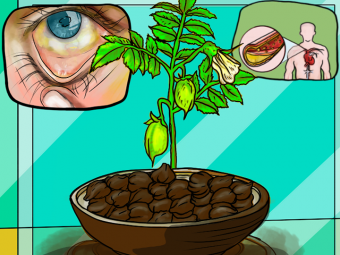 19 Amazing Benefits Of Black Chickpeas (Kala Chana) For Skin, Hair And Health
19 Amazing Benefits Of Black Chickpeas (Kala Chana) For Skin, Hair And Health 28 Best Shea Butter Benefits For Skin, Hair And Health
28 Best Shea Butter Benefits For Skin, Hair And Health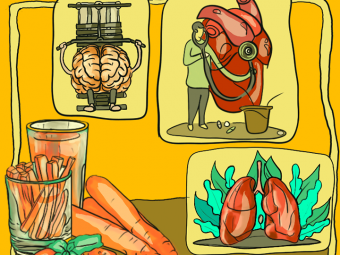 15 Best Benefits Of Beta Carotene For Skin, Hair And Health
15 Best Benefits Of Beta Carotene For Skin, Hair And Health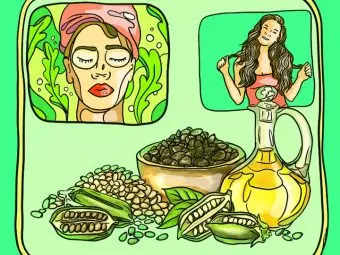 29 Amazing Benefits Of Sesame Seeds For Skin And Health
29 Amazing Benefits Of Sesame Seeds For Skin And Health 4 Reasons Goat Cheese Is Better Than Cow Cheese
4 Reasons Goat Cheese Is Better Than Cow Cheese 38 Benefits Of Lime For Skin, Hair, And Health + Nutrition
38 Benefits Of Lime For Skin, Hair, And Health + Nutrition Rice Water For Skin – How To Use It For Maximum Benefits
Rice Water For Skin – How To Use It For Maximum Benefits 9 Benefits Of Cranberry Tea For Health And Recipes To Try
9 Benefits Of Cranberry Tea For Health And Recipes To Try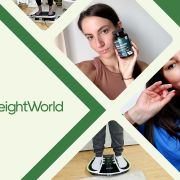


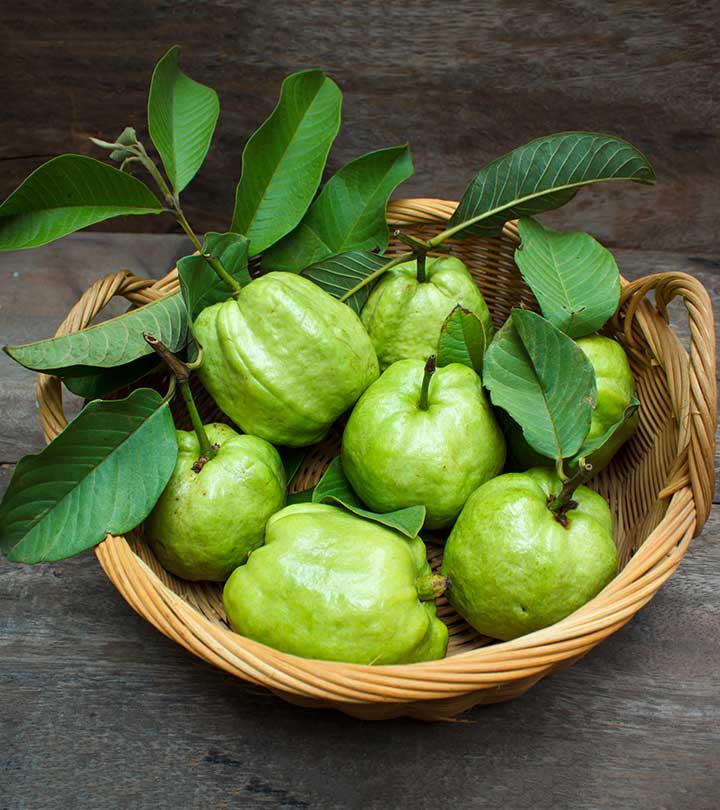
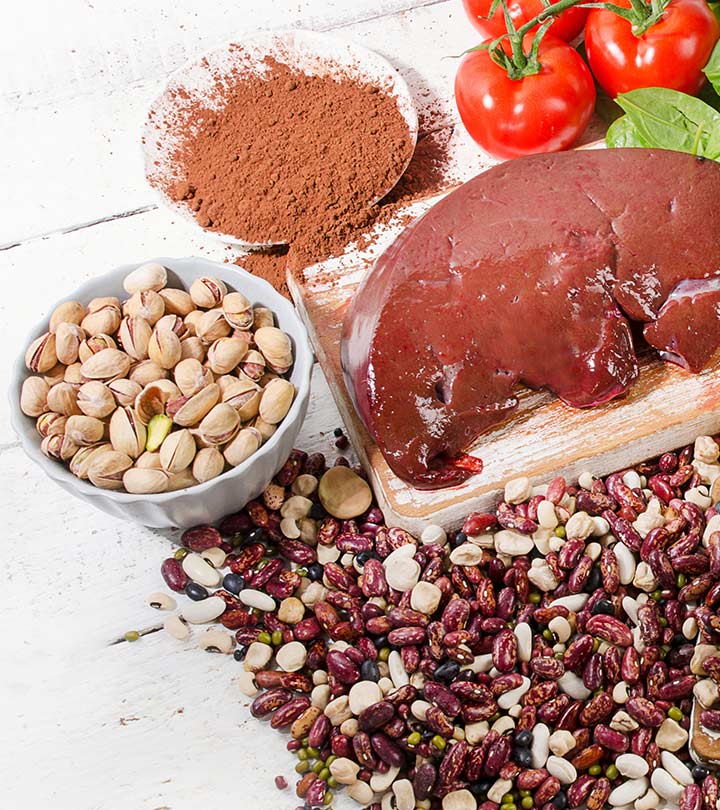



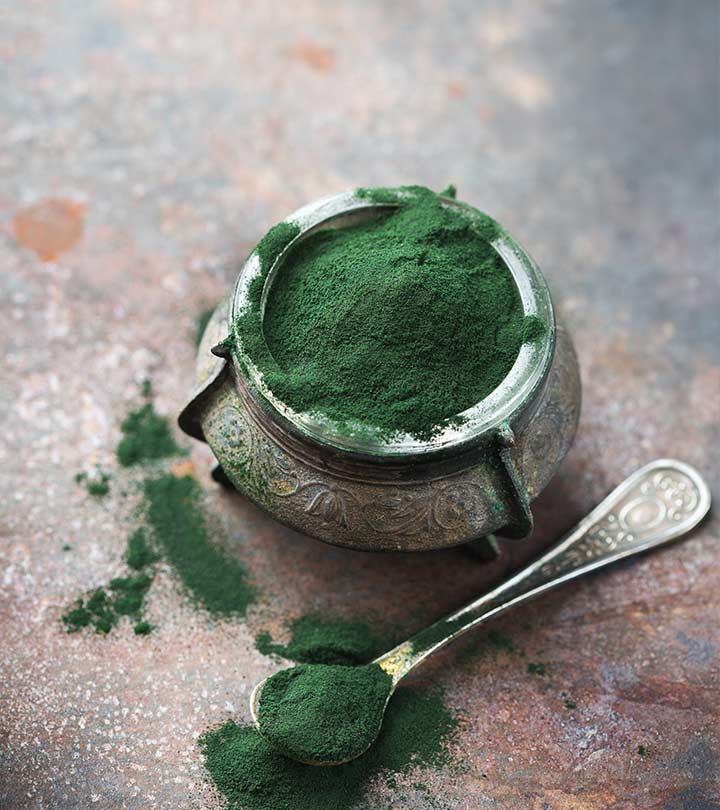


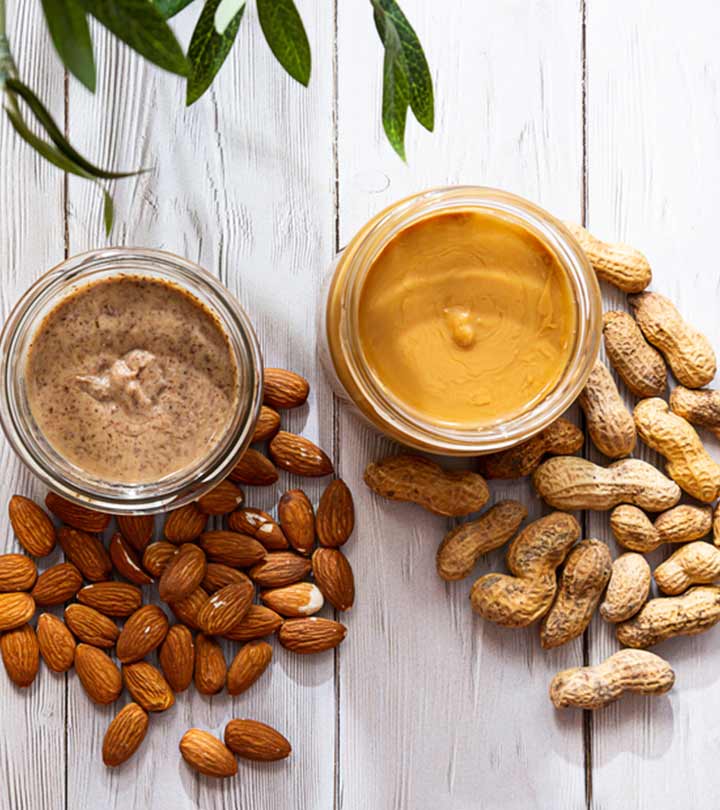













Comments